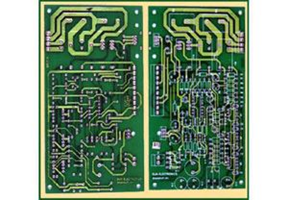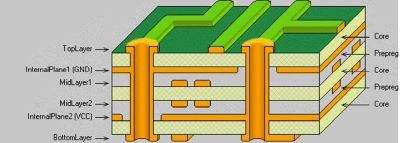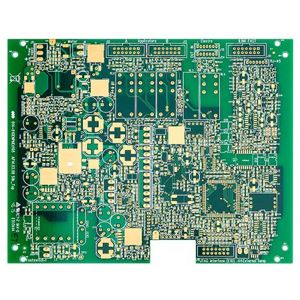PCB Full Form | What is Printed Circuit Board
What is the full form of PCB
PCB: Printed Circuit Board
PCB stands for Printed Circuit Board. It is an electric circuit in the form of a thin board made of a non-conductive material that perfectly holds copper circuitry such as fiberglass, plastic, composite epoxy, etc. It has conductive paths printed on it to connect different components, such as resistors, transistors, integrated circuits, etc. It provides mechanical support and a pathway to its electronic components for the flow of current.
PCBs are used in all electronic and computing devices such as televisions, digital cameras, tablets, cell phones, etc., including motherboards, network cards, graphics cards, and internal circuity boards of hard drives.
Types of Printed Circuit Boards:
Single-Sided PCBs:
Single-Sided PCBs:
It is made of a single layer of substrate or base material. Its one side is coated with a layer of metal, which is usually copper as it is an excellent conductor of electricity. The metal coating is coated with a protective solder, which is also covered by silk-screen to mark out all of the elements on the board. These PCBs are easy to design and manufacture as their circuits and components are soldered onto one side.
Double-Sided PCBs:
Double-Sided PCBs:
In this type of PCB, both sides of the board are coated with copper. Holes are drilled in the board to connect the circuits on one side to the circuits on the other side. This type of board connects the circuits on each side using either through-hole technology or surface mount technology. In through-hole technology, the tiny wires, which are known as leads, are passed through the holes, and each lead is soldered to an appropriate component or circuit. Whereas, in Surface mount technology, instead of wires, small leads are soldered directly onto the PCB.
Multilayer PCBs:
Multilayer PCBs:
They are made of several layers of substrate boards which are separated by insulating materials. They come in different sizes as small as four layers or as large as ten or twelve layers. Multi-layer PCBs are suitable for using in File servers, Data Storage, Satellite systems, GPS technology, Weather analysis, and Medical equipment. Just like double-sided boards, the components on multilayer boards are connected through holes or vias on the board.
Rigid PCBs:
Rigid PCBs:
They are made of a solid, rigid, substrate material like fiberglass that keeps the board from twisting. For example, a motherboard within the tower of a computer is an example of inflexible PCB.
Flex PCBs:
Flex PCBs:
They are made of a flexible substrate, typically a flexible plastic. The flexible material permits the board to fit into forms without affecting the circuits on the printed circuit board. These boards can restore heavy or bulky wiring in superior gear like satellites, where weight and space matter. Flex boards can also come in three formats: single-sided, double-sided or multilayer formats.
Rigid-Flex PCBs:
Rigid-Flex PCBs:
They are both rigid and flexible. So, they offer more benefits than the rigid or flexible PCBs for certain applications. For example, they make possible streamlined design, and reducing the overall board size and package weight. These are used with devices that require a strong board.